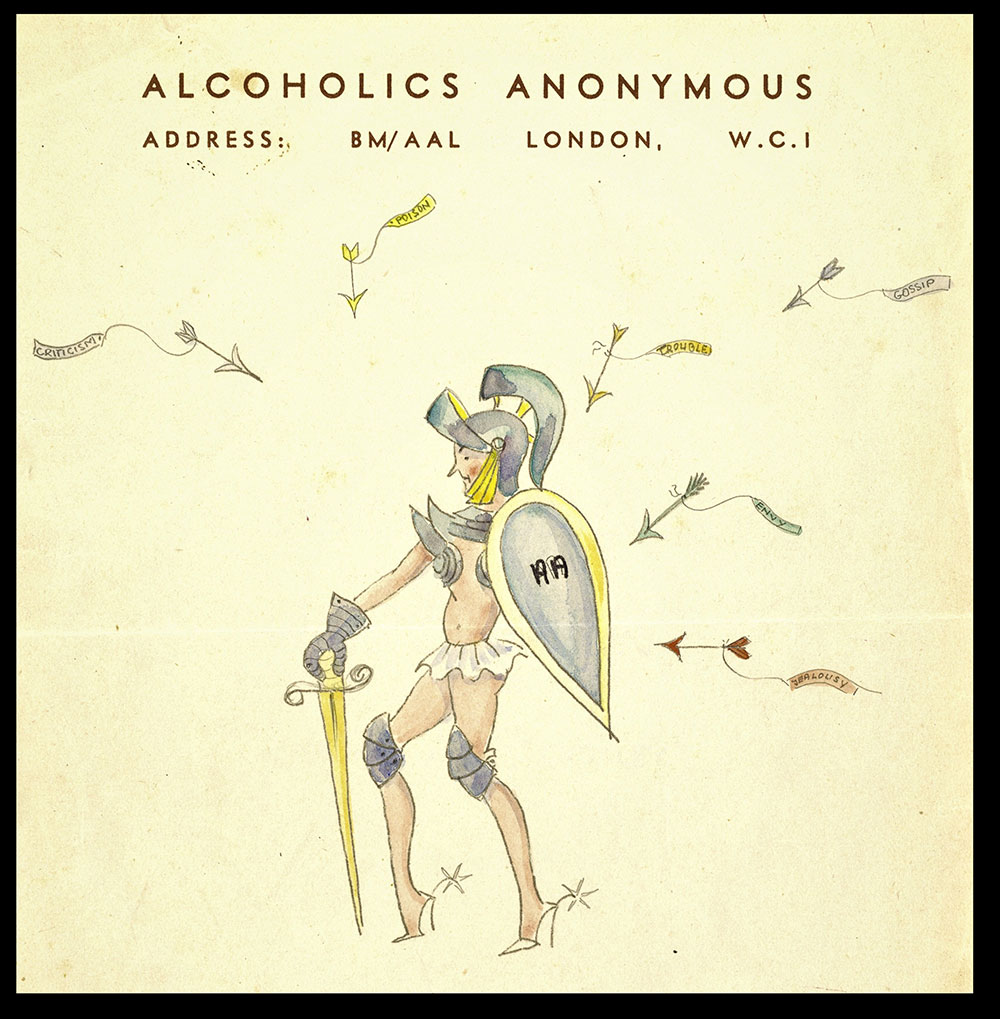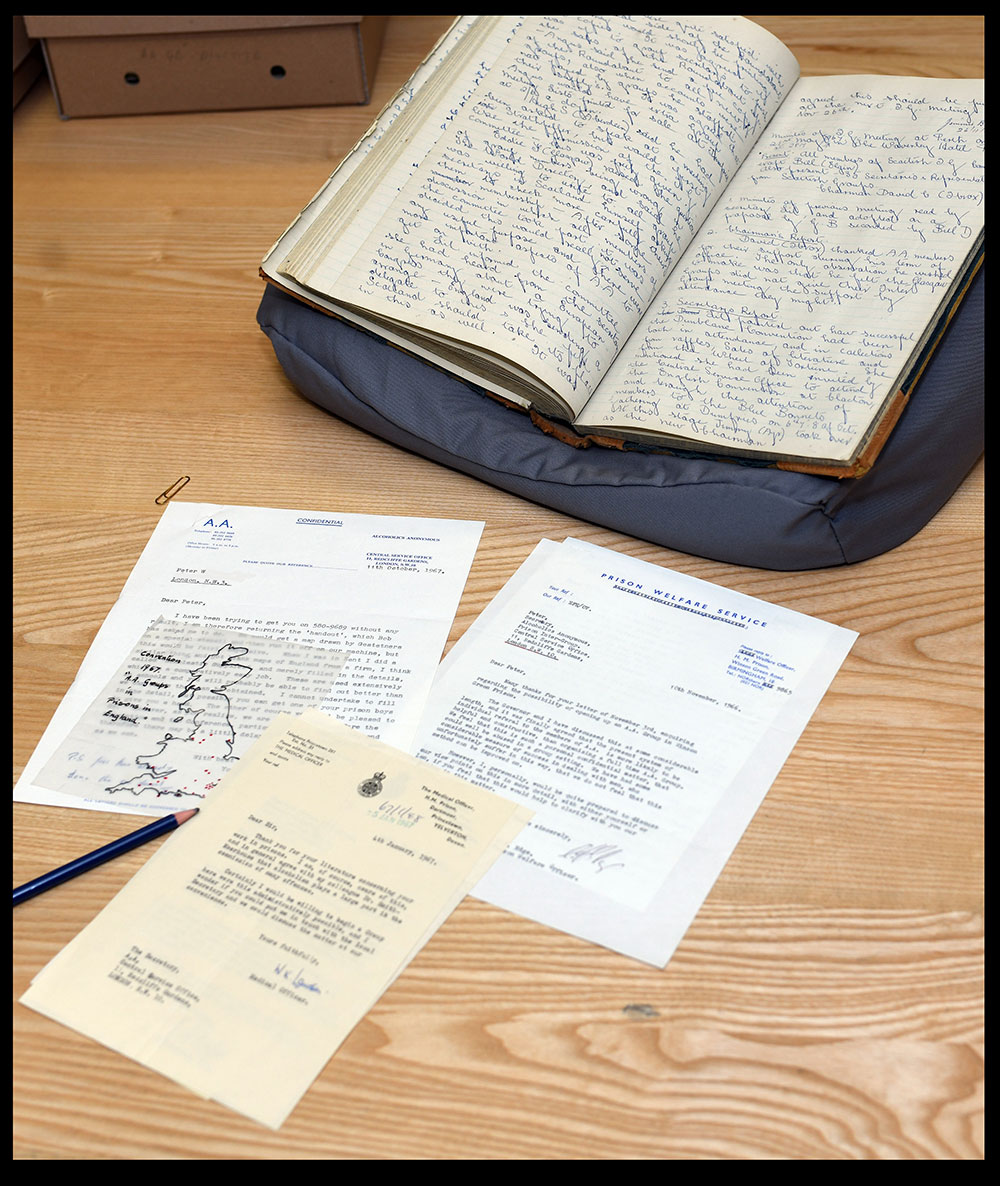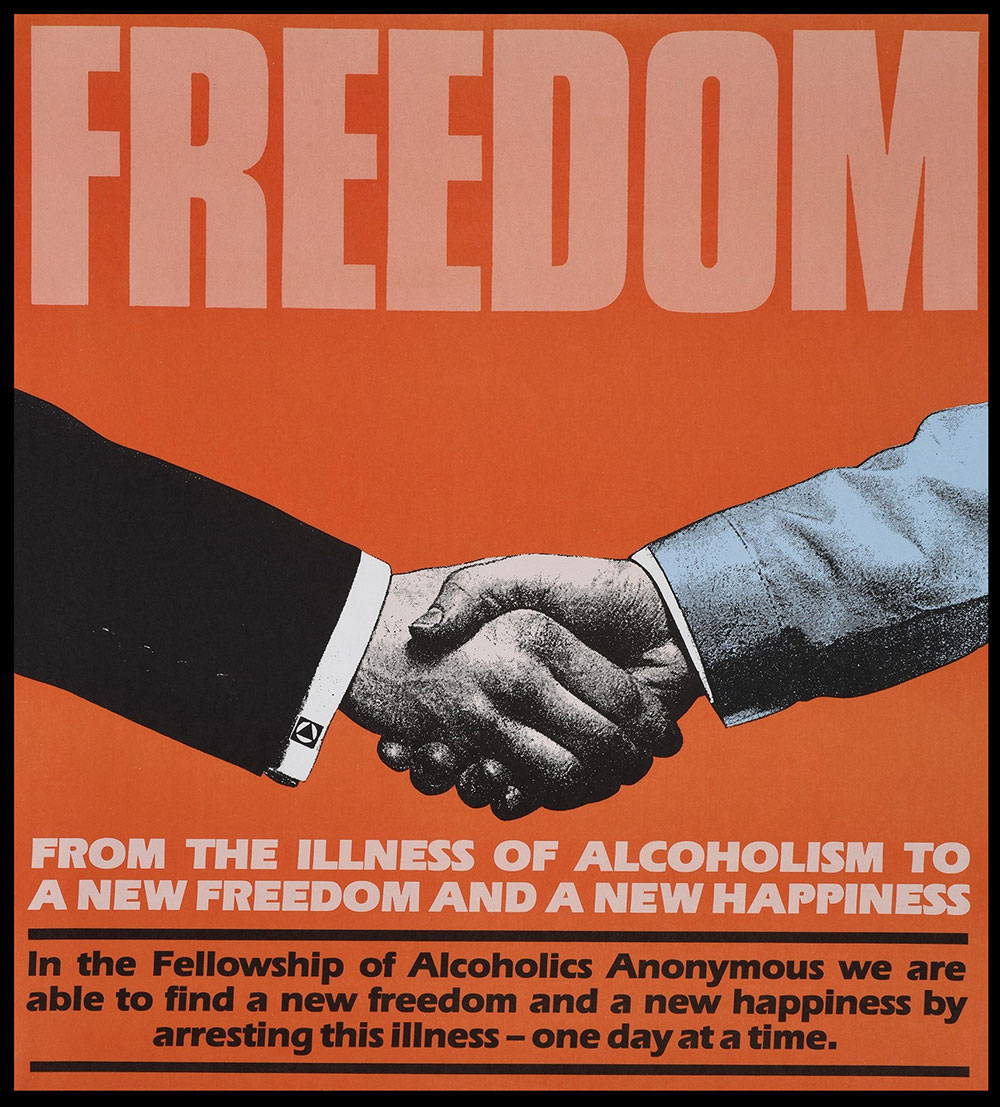Recognition through Service
1960-1975
The 1960s and early 1970s was a period of growth and development for the British Fellowship, and it began making inroads within sectors of society hit hardest by alcoholism. The first AA prison meeting took place at Wakefield Prison on 27th December 1957 under the organisation of the Leeds Group. The Wakefield Prison Group served as a test case, to measure the extent with which alcoholic inmates engaged with the Twelve Step programme. The next prison group did not open until 1960 at Barlinnie Prison in Scotland. It was set up by an AA member who was a journalist for a leading Scottish newspaper and had undertaken research on AA’s success in American prisons. Despite facing obstacles from some wary prison governors and staff, as inmates were transferred around the country the AA message started to spread and groups began to flourish.

Entrance to Warlingham Park Hospital, location of the alcohol treatment unit set-up by early AA advocate Dr Max Glatt (1960s)
Image courtesy of the Bethlem Museum of the Mind © Bethlem Museum of the Mind

Letter from Bill Wilson to the British Fellowship thanking them for their congratulations on his thirty-second anniversary of sobriety, and returning congratulations on the occasion of the first British General Service Conference (18 November 1966)
Archive reference: AA/1/1/9
In 1960 the Rowntree Trust issued a brochure on alcoholism to some 23,000 doctors, which included information about AA and the Twelve Step programme. This led to a surge in enquiries about the Fellowship from the medical establishment. In 1961 Max Glatt, founder of the Warlingham Park alcohol unit, was asked to prepare a report on alcoholism and its treatment for the Joint Committee of the British Medical Association and Magistrates Association. The memorandum published in the British Medical Journal encouraged the Ministry of Health to release a 1962 report which supported regional specialised alcoholic units in hospitals which would work closely with AA. Glatt said that this was a significant paradigm shift in that the Government had come to accept Alcoholism as an illness for which doctors should take responsibility and also acknowledge AA as an important ally in the fight to rehabilitate the victims of Alcoholism’.
Following two years of planning, AA GB’s first General Service Conference was held at the Manchester Midland Hotel in October 1966. At the first conference, key decisions were made regarding AA GB’s governance structure, including the creation of the Service Committee which would provide oversight and ensure responsibility for finances and daily operations. The General Service Board became the Conference’s executive body, and it would report annually on the work accomplished the previous year.

Selection of items relating to the death of Bill W in January 1971. It includes a death notice published on the front page of the New York Times, a telegram from GSO NY to the British General Service Board and an order of service from the memorial held at St Martin-in-the-Fields, London (1971)
Archive reference: AA/15/5
1971 began on a sombre note, with the death of Bill W on 4 January at the age of 75 and with 36 years of sobriety. ‘Our thoughts and sympathy speed to you at a time when your heart, though sad, must be very proud of a great man’ read the telegram sent from the General Service Office to his widow Lois. ‘The gratitude of thousands will perpetuate Bill’s spirit and memory through the ever growing Fellowship he initiated and helped rebuild’. The British Fellowship held memorial services at the Royal Parish Church of St Martin-in-the Fields and the Cathedral Church of the Holy and Undivided Trinity, Bristol.

Four copies of SHARE from 1975, 1981, 1999, and 2009. Referred to as the ‘meeting between meetings’ and going strong today, SHARE Magazine has had several redesigns since its inception in 1972.
Archive reference: AA/7/3
In 1972, the General Service Board took control of the AA Newsletter, and divided it into two separate titles: ‘SHARE’ and ‘Box 514’. The latter was a quarterly 'service' orientated newssheet started in February 1972, providing information from the General Service Board and the General Service Office. The publication later became Alcoholics Anonymous News, which in turn was renamed Alcoholics Anonymous Service News. SHARE magazine, known as the meeting between meetings, became the leading national AA newsletter and at one stage had a circulation of 100,000. With a dedicated editorial team, SHARE featured artwork and illustrations which created a unique historical visual document for AA GB.
In 1972, the Fellowship celebrated its Silver Jubilee 25th Anniversary in England which was held at the Bloomsbury Centre in London. In 1974, the third World Service Meeting was held in London, making it the first to take place outside the US. By the mid-70s, it was becoming increasingly apparent that the numbers attending the annual national conventions made it worth dividing into two events; North and South. Held in alternate years, with the Northern convention in spring and Southern conventions in autumn, these popular gatherings were designed to be accessible for all members of the British Fellowship.
In 1974, the General Service Board commissioned a comparative analysis of how the service structure of AA in North America operated differently from that in Great Britain. The outcome of this study led to the publication of the Service Handbook, which outlines how the service structure would operate in Britain and in accordance with the British legal system. The handbook was approved by the ninth general service conference of AA in Great Britain held in Manchester on the 5-7 April 1974, and there have been several updates and iterations of the Handbook since.

11 Redcliffe Gardens, London, served as the location of the General Service Office from 1951 until 1986, when GSO moved to York. The Southern Service Office was located here until 1999, when it moved to Cynthia Street. Regular AA meetings continued to be held at Redcliffe Gardens until the outbreak of Covid-19 in 2020 (1970s) Archive reference: AA/13/2/2/5
Back to the timeline


